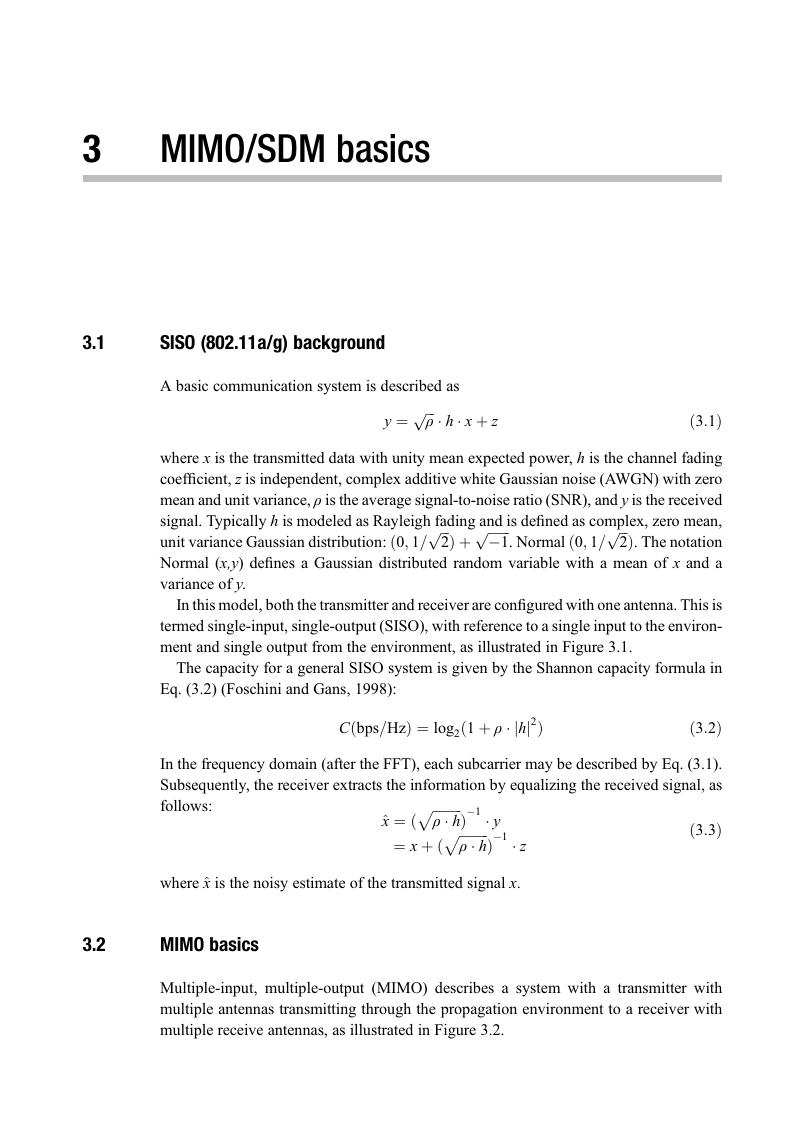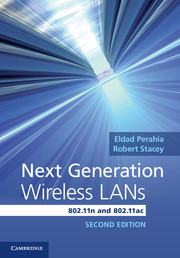Book contents
- Frontmatter
- Contents
- Foreword
- Preface to the first edition
- Preface to the second edition
- List of abbreviations
- Chapter 1 Introduction
- Part I Physical layer
- Chapter 2 Orthogonal frequency division multiplexing
- Chapter 3 MIMO/SDM basics
- Chapter 4 PHY interoperability with 11a/g legacy OFDM devices
- Chapter 5 High throughput
- Chapter 6 Robust performance
- Chapter 7 Very High Throughput PHY
- Part II Medium access control layer
- Part III Transmit beamforming, multi-user MIMO, and fast link adaptation
- Index
- References
Chapter 3 - MIMO/SDM basics
from Part I - Physical layer
Published online by Cambridge University Press: 05 June 2013
- Frontmatter
- Contents
- Foreword
- Preface to the first edition
- Preface to the second edition
- List of abbreviations
- Chapter 1 Introduction
- Part I Physical layer
- Chapter 2 Orthogonal frequency division multiplexing
- Chapter 3 MIMO/SDM basics
- Chapter 4 PHY interoperability with 11a/g legacy OFDM devices
- Chapter 5 High throughput
- Chapter 6 Robust performance
- Chapter 7 Very High Throughput PHY
- Part II Medium access control layer
- Part III Transmit beamforming, multi-user MIMO, and fast link adaptation
- Index
- References
Summary

Information
- Type
- Chapter
- Information
- Next Generation Wireless LANs802.11n and 802.11ac, pp. 32 - 61Publisher: Cambridge University PressPrint publication year: 2013
